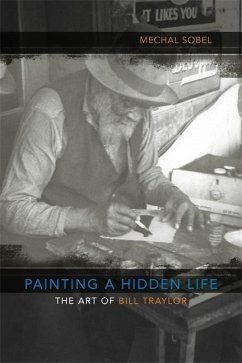Born into slavery on an Alabama plantation in 1853, Bill Traylor worked as a sharecropper for most of his life. From 1936 to 1946, he sat on a Montgomery street corner and created well over 1,200 paintings. Collected and later promoted by a young Montgomery artist, Traylors work received star placement in the Corcoran Gallerys 1982 exhibition Black Folk Art in America, placing him among the rising stars of twentieth-century American artists. Most critics and art historians who analyze Traylors paintings emphasize his extraordinary form and evaluate his content as either enigmatic or simply narratives of black life. In Painting a Hidden Life, historian Mechal Sobel reveals a previously unrecognized central core of meaning in Traylors near-hidden symbolisma call for retribution in response to acts of lynching and other violence toward blacks.
Hinweis: Dieser Artikel kann nur an eine deutsche Lieferadresse ausgeliefert werden.
Hinweis: Dieser Artikel kann nur an eine deutsche Lieferadresse ausgeliefert werden.

